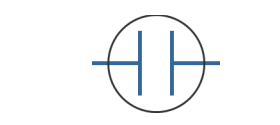One out of one voting (1oo1) represents a single device. This is the most common voting arrangement as well as the cheapest and easiest to maintain.
If safety goals and nuisance trip avoidance goals can be achieved by a simplex device, that is the arrangement that should be used.
1oo1 Voting

Only if a single device cannot achieve one of the performance metrics should redundancy be considered. In the figure you will see a 1oo1 voting switch, such as a switch that might be contained in a pressure switch or a level switch.
In SIS, we typically employ a de-energize-to-trip, fail-safe circuit design. With this design when power is removed from the circuit it will default into the position that the trigger the plant shutdown and safe condition.
For switches in this configuration the failure mode of “contacts welded closed” is a dangerous failure because the failure prevents you from de-energizing the circuit and causing the plant shutdown.
On the other hand, the failure mode of “open circuit” where the switch or related wiring open and interrupt the power of the circuit is a safe or spurious failure. The component failure causes the plant to shutdown when there was no real demand to do so from the process.
The probability of failure and spurious trip rate are functions of the reliability of the specific piece of equipment. In a 1oo1 voting arrangement there is no failure tolerance to either dangerous failures or safe failures.
For purposes of comparison, we have set a value of PFD (average probability of failure on demand) and STR (spurious trip rate) to set a baseline so that we can compare the characteristics of the different voting arrangements
